GES194 - National Grid Tunnels, London
I'd seen Residues had taken down here, and was intrigued. When he told me what was involved in getting down the shaft, I was less intrigued. It would involve descending down a 40m shaft...using only a box crane support. I put the idea to the back of my mind, until I felt like maybe I could do this. Dicky and I had been wanting to do something decent, so I suggested this, and he was keen. I also told Brad Garret about it, and he too was very keen. Brad Garret invited along Silentmotion and the team was assembled.
Silentmotion claimed he'd been staking it out for awhile, and suggested going in at a point that was overseen by a camera. I opted to show them a spot I thought was easier at the back. When they saw it, Silentmotion was liking the opportunity to show off his exemplary climbing skills and was first to bounce up. Dicky wasn't far behind, and then Brad Garret was in. Which just left me. Although I thought it was a good way in, I hadn't actually contemplated climbing up. As I got to the top of the fence, it crumbled in my hands, and I fell down. Being last isn't always great. I looked around, and with no one about, had another attempt. It wasn't a graceful entry, but I was in. We then crept through the various storage yards, and got to within striking distance. One of the problems with so many top explorers, is that everyone wants to lead the explore and make the crucial decisions. One of the upsides is that a number of keen eyes means all potential problems are spotted.
We darted across an open walkway, and we were at the edge over the huge shaft. Seen below. Silentmotion made clear he was going first, and without hesitation bundled over the shaft wall, and began descending the box crane, relishing every moment of it. Dicky, another keen heights specialist, was up next, and chased down after Silentmotion. Always a man for adventure, Brad Garret set off next. I, meanwhile, was studying the implications, and trying to contemplate with myself over the huge verticality of it all.
Before I knew it, I was tentatively stepping over the low wall, and standing on the box crane. My hand gripped tightly with fear, as I watched my braver partners descend below. I took an exploratory descent of my right leg down, and found the next section of the crane. My hands and other leg followed, and before I knew it, I was descending. Using advice from a Bristolian explorer and crane operator, I kept 3 points of contact at all times. I didn't really slip at all, and was soon down with the others.
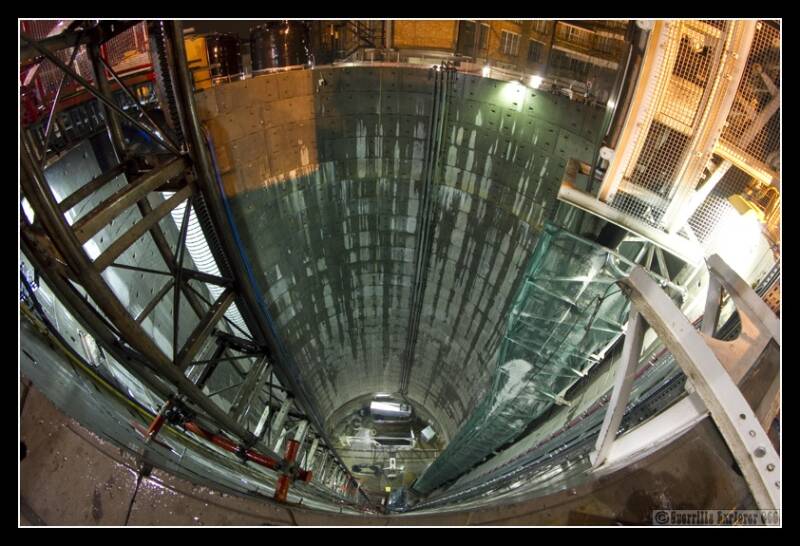
Once at the base of the crane, we were presented with two directions. The one ahead proved to be the shortest, merely a shunting yard for the trains. The base of the box crane is on the right.
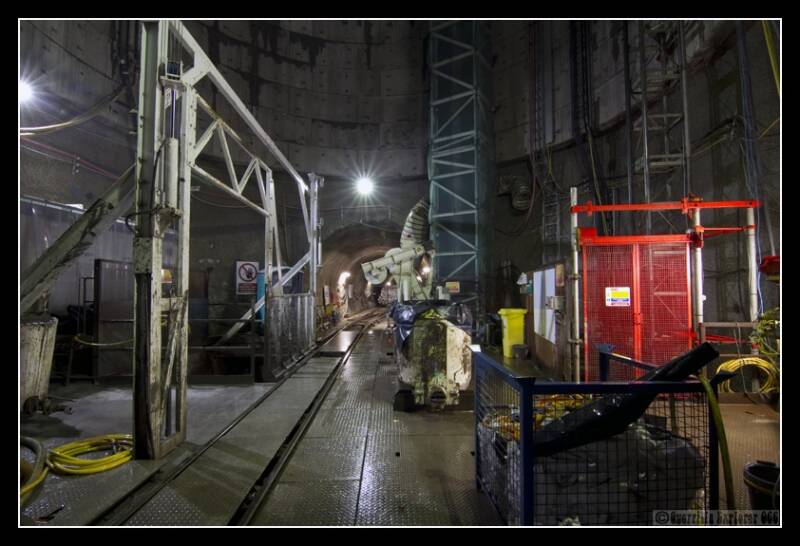
The shunting yard with the author. It wasn't more than about 30m long.
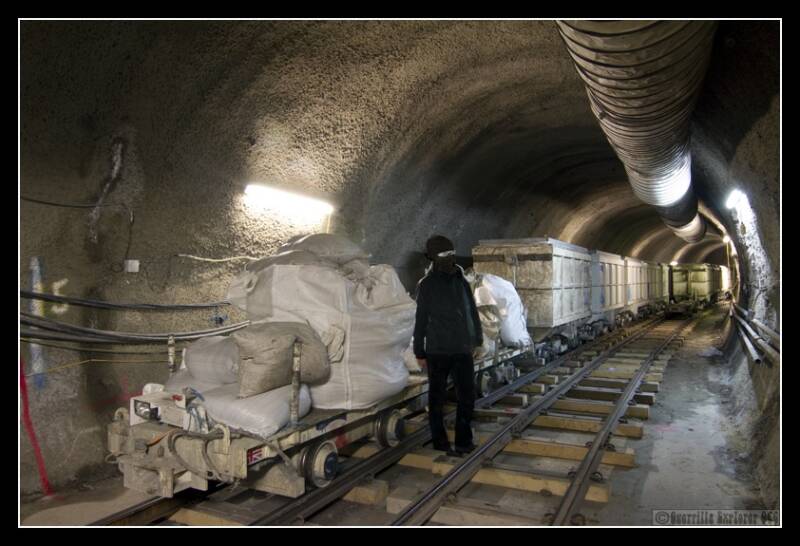
On the other side of the shaft, was a much longer tunnel. Parked up here were lots of small trains. Dicky sets up a shot. The large ventilation pipe goes above us.

Inside one of the worker carriages on one of the mini trains.
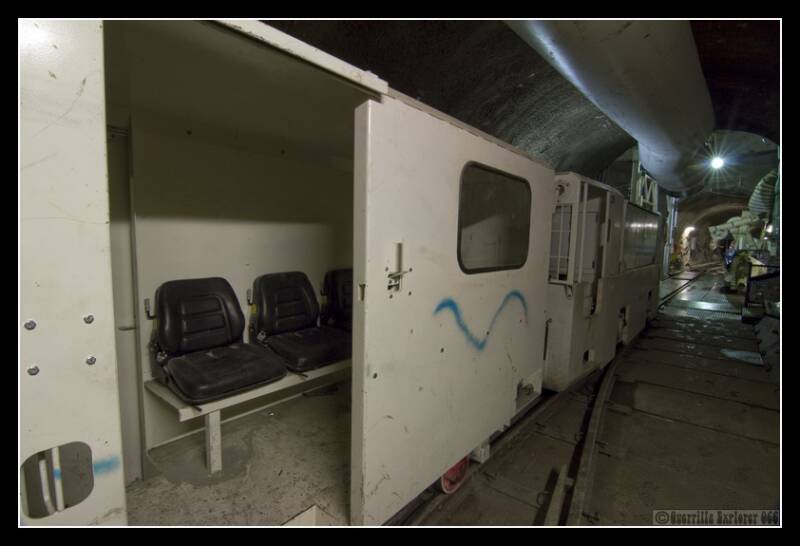
Where the train sidings merge onto one track, and head down towards the head of the tunnel.
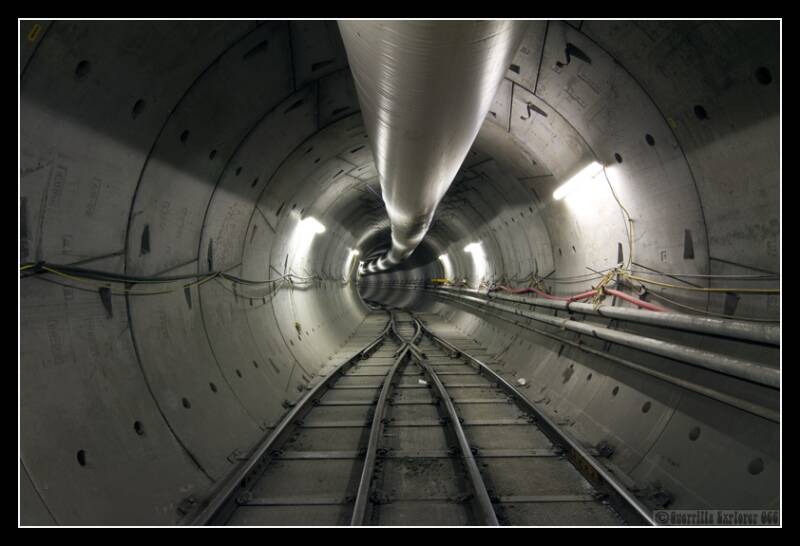
Sex of the contours, the track twists away below North London.
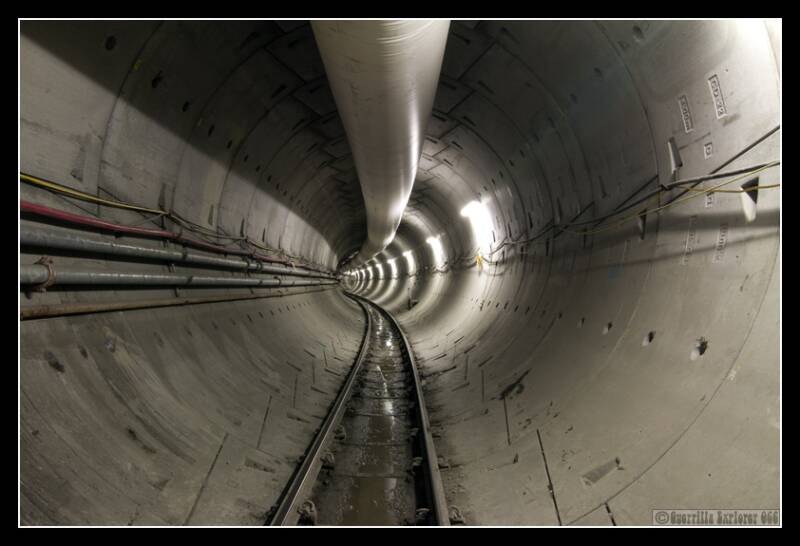
Finally we reached the head of the tunnel, where the complex tunnel boring equipment lay. It consists of a long group of separate activities all joined into one long piece.
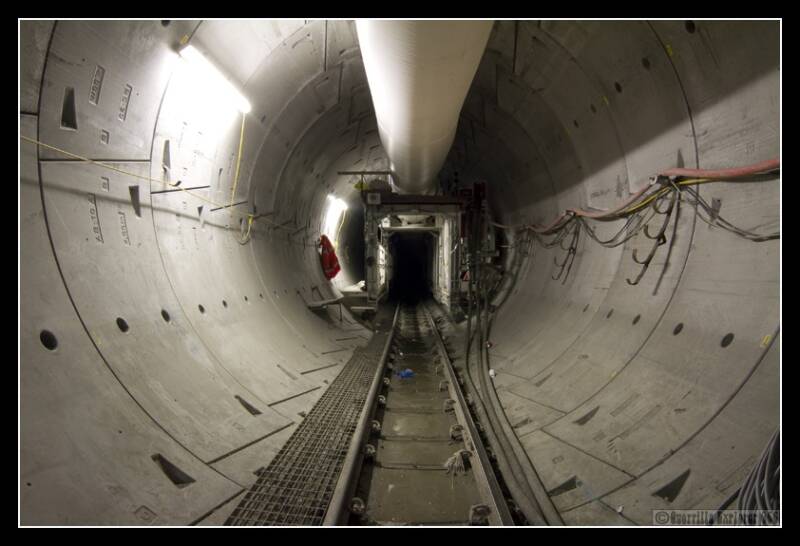
I got the impression that this is where the concrete slabs that line the walls were made. Either that, or this is where they arrive from the surface. Maybe they drop off the slabs, and then take away spoil in the empty cart?
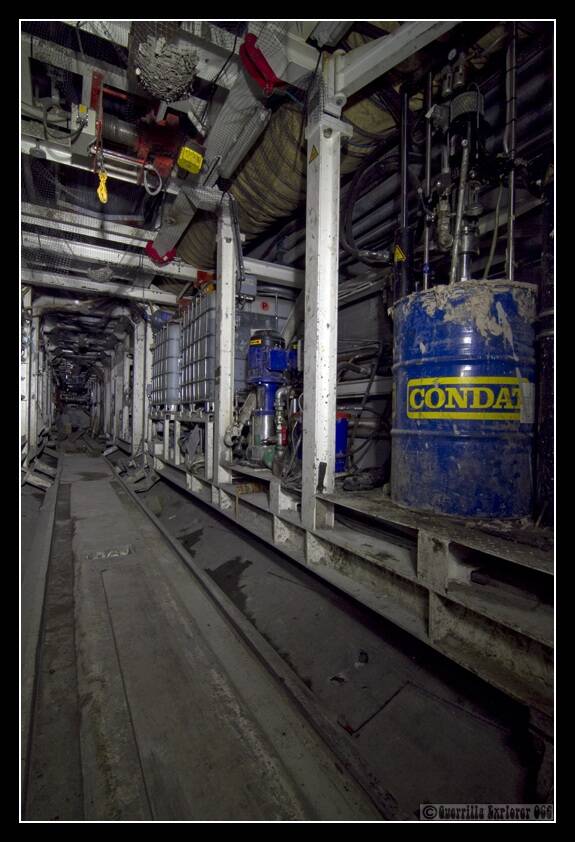
A gantry walkway went down one side, strange items covered in hazard symbols.
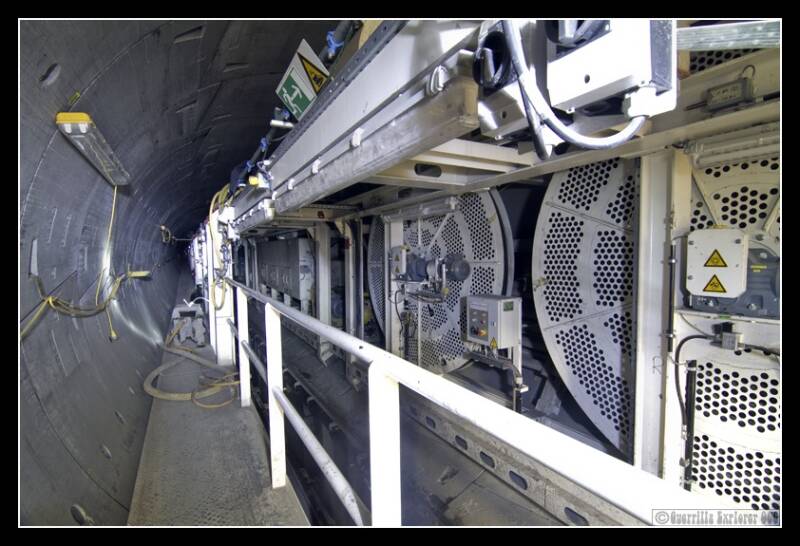
The middle section had what appeared to be the main control section. Brad Garret and Silentmotion try to understand it all.
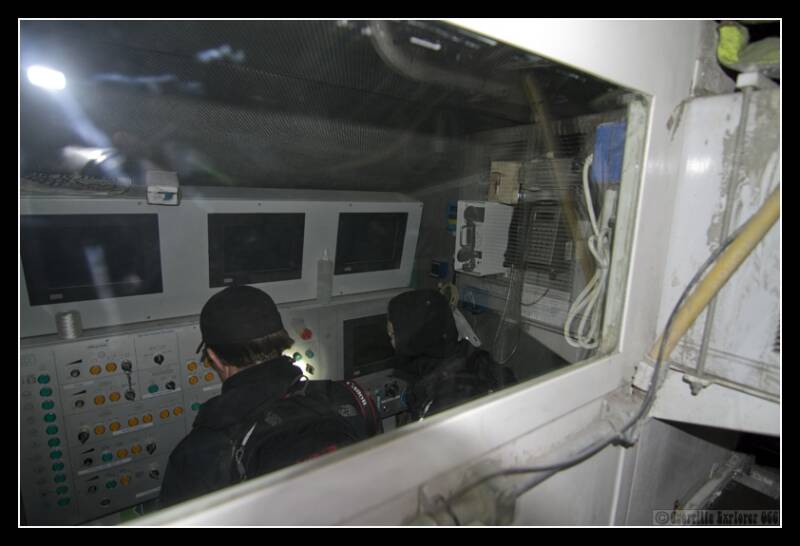
Conveyor belt taking away the spoil to awaiting trucks.
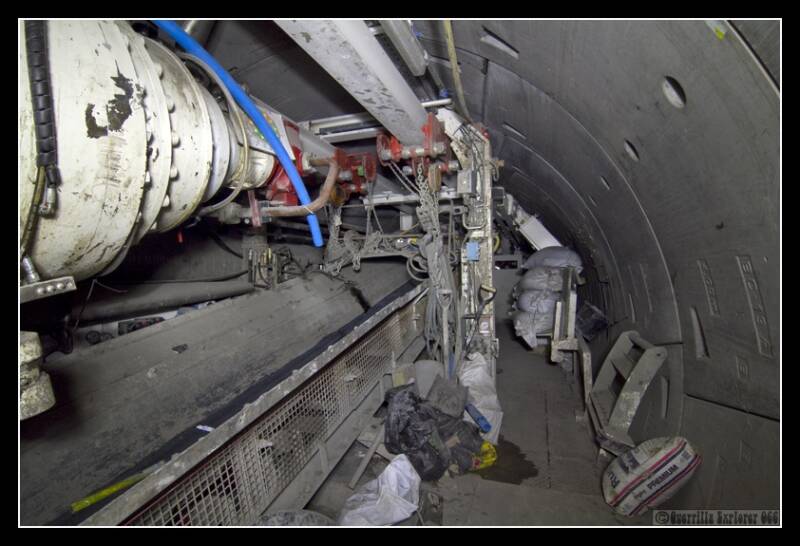
Behind the boring head, the conveyor belt, which takes away the spoil. This is also the point where concrete lining slabs are placed. However I couldn't work out how. I also think we neglected to find out where that ladder goes.
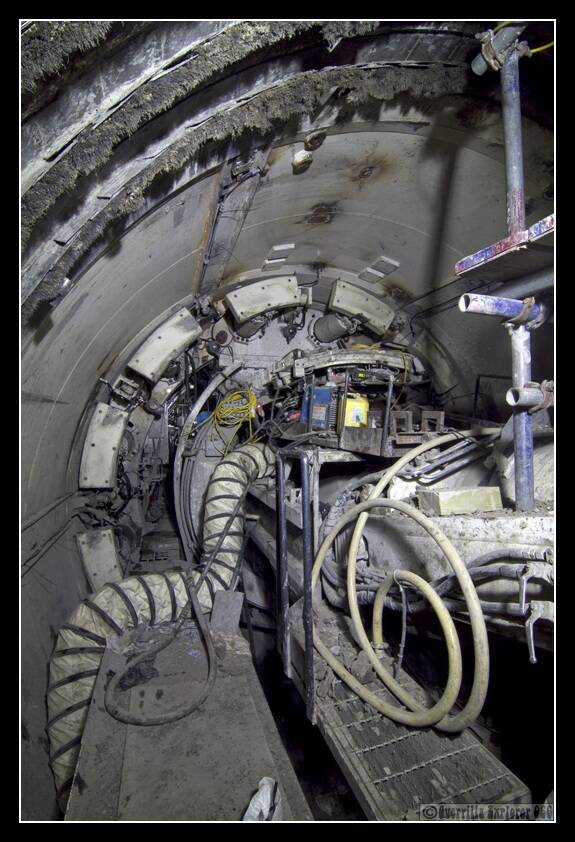
This is the actual boring section, which digs away at the North London clay. The little booth on the left allows one to monitor proceedings.
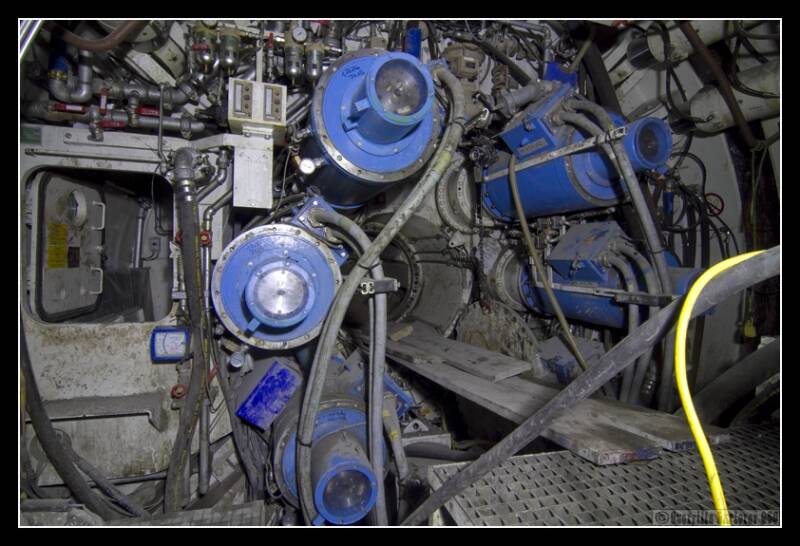
It was possible to look through and touch the clay on the thankfully off boring head.
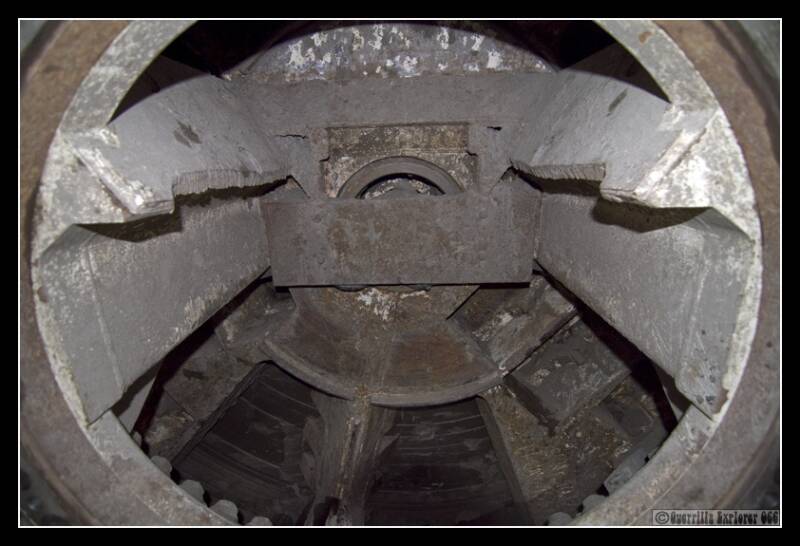
Silentmotion taking a snap at the back end of the tunnelling machine. A vague attempt at trying to be artistic.

We then walked off back to the shaft. On the right here is a safety point, so one can avoid the train.
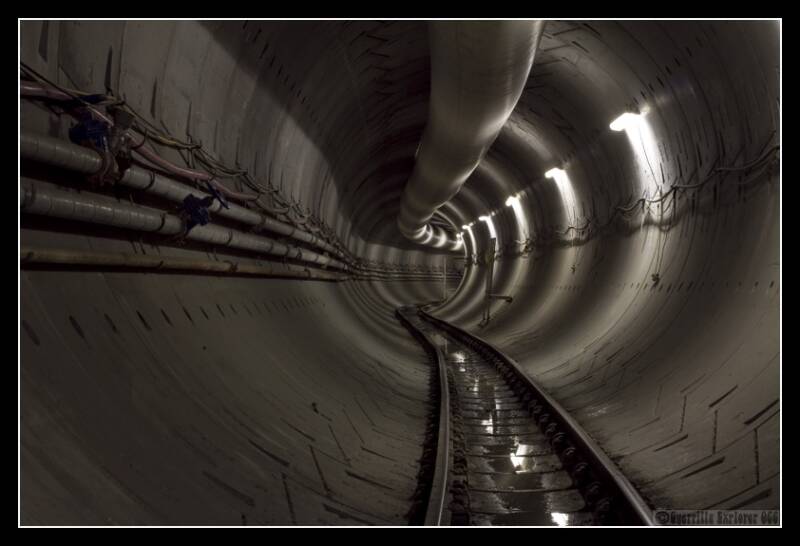
The splitting of the tracks meant we were back at the shaft.
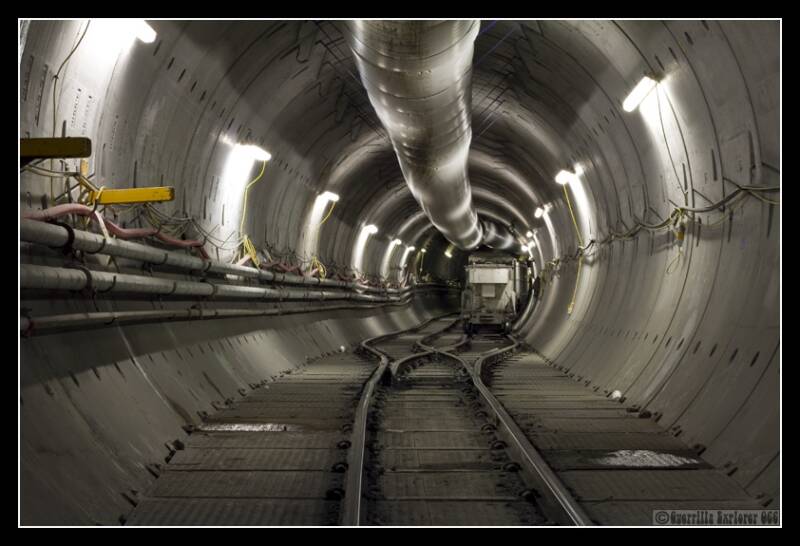
It was then time to face the inevitable, and the climb back up. I thought this was going to be harder then descending, but the adrenalin pumping through my veins was powering me up, equally the desire not to be too far behind the others. Getting to the rim at the surface was very welcome, and a huge sigh of relief washed over me as I stepped down.
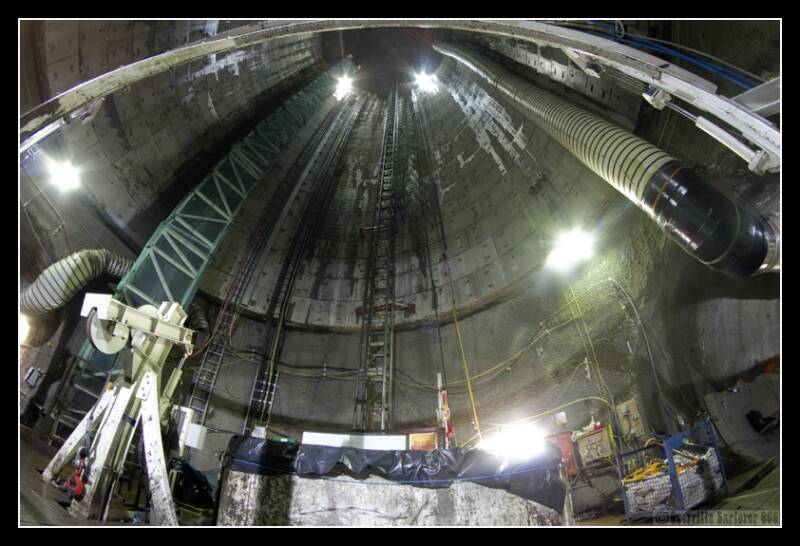
We then chose a quicker exit method, which involved almost dropping down on top of another group of explorers, who'd just shown up to go down themselves. It's a small world! Props to everyone who did this, and to for Residues for highlighting it's existence.
Add comment
Comments